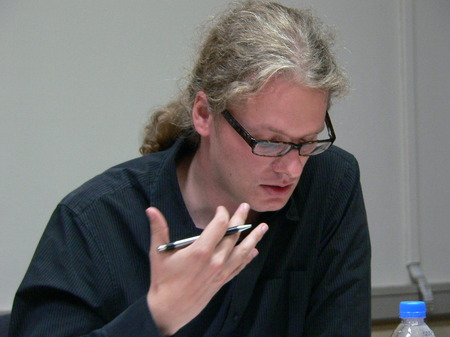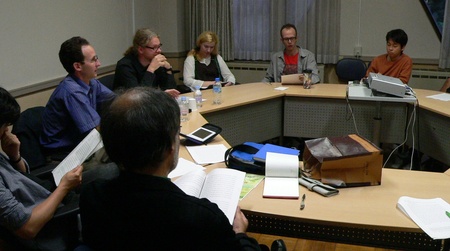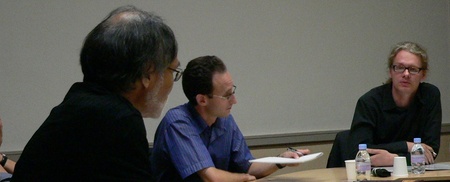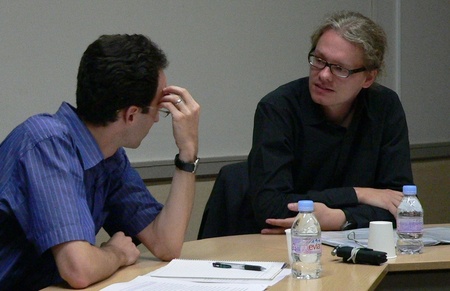[Report] “The Return of Rage”
Guest lecture by Prof. Mario Wenning, Macao University (9/19/2009)
1. Summary: Between Thymos and Utopia
Expressions of discontent, frustration and anger seem to be a familiar, even if not too common, part of politics. From booing political speakers to street demonstrations, from angry newspaper columns to violent clashes with the police. Not to mention the great revolutions of modern politics, which are often regarded, rightly or wrongly, as an outburst of rage by people who couldn’t take it any longer. And yet, despite this intuitive association of rage and politics, political thought, for the most part, seems to pay little attention to this emotion. At most it is regarded as something that accompanies political processes, without being an integral part of their meaning or dynamics.
Mario Wenning’s paper calls for a rethinking of the place of rage in politics. Building upon the contemporary German philosopher Peter Sloterdijk in his book Zorn und Zeit [Rage and Time], he returns to Plato and to his model of the human soul. More specifically, to that part of the soul Plato called thymos: the part that “contains” our pride and self-esteem, as well as our need for recognition. It is the part that gets excited or enraged when we are hurt by others, when we suffer from what we regard as injustice, when our honor is hurt and we feel unrecognized or underappreciated. It is this kind of psychological effect that Sloterdijk and Wenning are interested in.
The Western-Christian culture tends to regard rage as entirely negative and problematic, even as a sin. Rage can only lead to more rage, to a desire for revenge and to an endless cycle of violence. One finds a similar attitude in Confucianism and Buddhism, where rage is seen as primordial and destructive, both to others and to oneself. Following this tradition, many political theories fail to understand public eruptions of rage, such as those of the 2005 Paris riots, or young people joining terrorist organizations. What most analyses of these phenomena miss is that such rage or “thymotic energy” is the result of a sense of being hurt, either physically, materially, or psychologically. In other words, a sense of suffering an injustice. They also miss the fact that such rage is what drives most political movements and achievements, past and present.
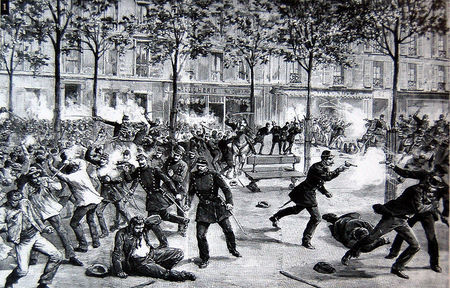
Wenning emphasizes that we should not deny the risk of rage leading to violence, vengeance and destructiveness. But we must also not forget that rage can be constructive: a part of, or at least the “spark” for, processes of genuine social transformation. There is a kind of rage whose aim is not revenge against those who caused the injustice, but rather a changing of present conditions so that this injustice will no longer occur or that its results will be corrected. Rage, in this sense, is the birthplace of genuine political action and change. Political theory and practice should confront the ambivalent nature of rage, rather than ignore it because of its inherent risk and uncertainty.
It is important to note that what Wenning ultimately calls for is nothing short than a reorientation of political thinking. Whereas the majority of political thought begins from questions about which political arrangements are just and fair, and which best promote equality and freedom, Wenning, echoing Sloterdijk, calls us to begin from real expressions of political rage. Again, the idea is not to give a carte blanche to all such expressions, but to argue that political deliberation should revolve around a different set of questions. Instead of asking which political arrangements would ensure that there would be no rage, we should begin from concrete rages, asking what might be their cause and how they might be addressed.
Ignoring or dismissing thymotic energies leads to the kind of centralist politics that is dominant in the so-called first world. Such politics, argues Wenning, lacks the courage to turn these energies into projects of social change (and we might add: the lack of courage to form a new solidarity with the enraged). Instead of rage being transformed into a utopian vision of a more just society, the dominant response to rage is to promote a politics of fear, to portray the outraged as the enemy, and to promise to restore “security”, “stability” and “good order”.
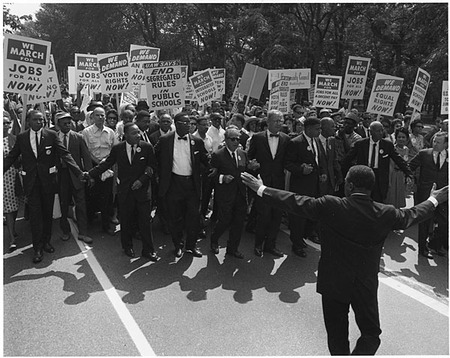
Such a “utopian lack” is also the problem Wenning ultimately sees in Sloterdijk’s account, despite its genuine importance. When Sloterdijk tries to paint a more concrete picture of “thymotic politics”, he talks about offering the outraged better chances to participate in what Wenning calls “the competitive framework of speculative capitalism”. According to this view, the way to address claims for recognition, a hurt self-esteem or a sense of being wronged, is to channel the resulting rage into a chance of gaining more “capital”—financial, cultural or political—that would somehow “balance” the score. Sloterdijk thereby ends up missing the radical potential of his own ideas. He turns the motivation of rage from a sense of injustice to a sense of unfairness, and the aim of rage from political transformation to seeking a new “equilibrium”. Wenning concludes that if we fail to recognize the potential of turning rage into a utopian vision, a vision of a society in which the cause of that rage would be addressed, we fall back to the traditional politics of pacifying rage, as opposed to a politics that sees rage as the starting point for genuine activism.
2. Discussion
Let us now turn to some of the questions that came up during the discussion.
Regarding the Platonic model of the soul, the question came up whether we should rely on such an outdated psychology and on the metaphysics that supports it. Wenning replied that he is not so attached to the specifics of Plato’s model. Rather, he is interested in borrowing the general idea of being driven by a sense of hurt and injustice, as well as the ambiguous nature of such a motivation. He admitted there might be other, perhaps better ways of accounting for such dynamics.
Another point with respect to Plato was that his notion of thymos seems quite different from the notion of political rage Wenning has in mind. In Plato, thymos is the sense of a violation of “the good”, namely of the justice exhibited in the arrangement of the ideal city. It is associated with the class of guardians who are in charge of defending this arrangement. Wenning, on the other hand, seems to be talking about a “modern” idea of rage: a revolt against what is perceived as the injustice of the status quo. The question is whether one can borrow only certain aspects of Plato's thymos, or whether we are talking about a different kind of rage altogether.
When we begin to talk about emotions it is often hard to find the right words. “Rage”, “anger”, “frustration”, “disappointment”—do they all carry the same political significance? Are there perhaps other emotions that can play a similar role to rage, for instance shame? (“we are ashamed of what our country is doing”). This relates to another difficulty, which is that both the psychology of emotions and the language used to describe them seem to vary across cultures and historical circumstances. Such questions might not necessarily point to unsolvable problems. Instead, we can say that there is room to expand “the politics of rage” into a larger research program that explores the relations between the emotional and the political.
When asked about his use of the term “utopia”, Wenning clarified that he is not referring to some specific content, but to the idea that there can be no real politics without some utopian orientation. Nevertheless, he did emphasize two general characteristics of utopia. First, utopia should not be a detailed blueprint for a future society or “a new man”, but a series of attempts to think differently and creatively about various aspects of our lives. For instance, about how we manage time and space, our ideas of ownership and profit, etc. Second, utopian thinking must involve a constant dimension of self-critique or “deconstruction”. We must recognize that any attempt to implement utopian ideals inevitably leads to new problems. We must be critical enough to examine and adapt these ideals, rather than forcefully imposing them no matter what.
Another point that came up was whether this politics of rage is not relying on some way of distinguishing between productive and destructive rage (“good” and “bad” rage), thereby bypassing the ambiguity of thymos. Wenning responded that the idea that rage can be constructive does not mean that we can find some guarantee or formula for such a distinction. Rather, the emphasis is on criticizing the kind of politics that ignores the place and potential of rage altogether.
3. Final Thoughts: Rage and Contemporary Japanese Politics
Allow me to end with an attempt to follow in Sloterdijk and Wenning’s path, and to ask whether we might be able to apply their approach to a discussion of the recent political development in Japan, namely the landslide victory of the Democratic Party (DPJ) in the 2009 general elections.
Following the model suggested in this talk, we might try and analyze this victory in terms of the rage of the Japanese public, disappointed by the former rule of the Liberal Party (LDP). According to the more cynical (some would say realistic) view, the DPJ only succeeded in convincing people to vote against the LDP. Beyond that, the promises of Hatoyama and his fellows are so vague that it is hard to say they are offering a genuine utopian horizon.
Will the Japanese voter hold the DPJ responsible for offering such a horizon, or will it settle for this parliamentary game of “musical chairs”? Will the thymotic energies of the public be exhausted through this act of “revenge” against the LDP? Or will the DPJ find itself with more rage than it hoped for, namely with a public demand that it step up to its promises, and not simply continue with “business as usual”? Which of these will turn out to be the case requires much further analysis, and is most likely unpredictable. Nevertheless, it could be that in order to try such an analysis, and in order to begin to imagine what real change and real addressing of rage and injustice might look like, we ought to take seriously the “thymotic turn” that Wenning puts forward.
Naveh Frumer







